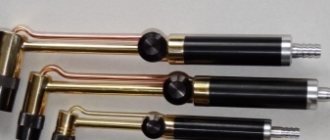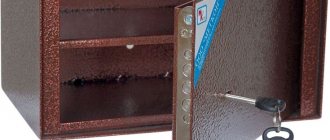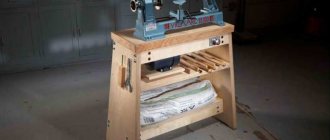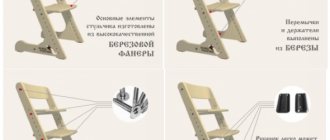The rectification column, which 20 years ago was only used in distilleries, is now used in everyday life to produce high-quality alcohol - rectified alcohol, which is an impossible task for a conventional moonshine still.
And in order to better understand what it is, what the structure and principle of operation of the distillation column is, as well as how to make the unit with your own hands, it is worth familiarizing yourself with the issue in more detail.
How to achieve better results?
When operating a distillation column, certain measures must be observed to ensure normal operation and obtain a high-quality final product.
Particular attention should be paid to activities in the following areas.
Elimination of “flooding” of the installation
This “disease” is associated with the slowing down and stopping of the flow of reflux, which leads to its accumulation in the cylinder and blocking the steam flow. As a result of “flooding”, the pressure inside the column increases, causing loud gurgling and noise.
The phenomenon can be provoked by the following reasons:
- Exceeding the permissible speed of steam flow, which can be caused by excessive heating of the liquid in the cube;
- Excessive filling of the cube with raw materials or blockages in the lower zone of the pipe;
- The pressure at the bottom of the column is too low, which is typical for high mountain conditions;
- An increase in voltage in the supply network, which causes an unplanned increase in the power of the heating element;
- Violations in design or technology.
Installing automatic control and regulation of the process helps to avoid this unpleasant phenomenon.
Particular attention is paid to heating the raw materials and filling the cube
Timely removal of the finished product and settling heavy fractions
In the first case, the technique is simple - at the initial stage (until temperature and pressure stabilize), only a quarter of the highly volatile vapors condenses with the final product and is removed outside, and then its maximum volume is removed.
The appearance of sediment from heavy fractions is more difficult to detect. You have to focus on the smell and color of the liquid at the very bottom of the column.
Correct preparation of the installation for start-up
Before starting rectification, it is necessary to check the condition of the apparatus, first of all, the tightness of the column. To check, the outlet of the finished product is shut off and cold water is pumped in.
Only after making sure that the installation is tight can you start pouring raw materials and heating the cube.
You should not expect miracles from a household machine and should not replace a moonshine still. The minimum strength of the initial liquid must be at least 30%, otherwise the output will not be a product that is close in strength to pure alcohol.
When making an installation with your own hands, you must not allow loss of thermal energy through the column body
It is especially important to protect the lower part, i.e. zone up to the first reflux condenser
It is recommended to use as thermal insulation:
- Styrofoam,
- penoizol,
- modern foil insulation.
Distillation columns allow you to deeply purify liquids or separate the light fraction. In industrial settings, they find application in many industries, incl. With their help, oil refining is ensured and high-quality alcohol is produced.
At home, such installations are suitable for producing very strong, high-quality alcoholic drinks from moonshine. When used correctly, they are completely safe and effective.
Instead of an afterword
The alcohol obtained through rectification is much higher quality than the distillate from a classic moonshine still.
But along with the positive aspects come the disadvantages: the requirements for the equipment are much higher, and its production is more expensive; in addition, operation also requires high skill.
Therefore, it is not so easy to clearly determine which is better, a good moonshine still or a distillation column, but, of course, there is an intermediate solution - a mash column. It produces a distillate, but not a rectified product, of very high quality, and it is easier to use, it’s all a matter of priorities.
Operating principle of a distillation column
Distillation section
Let's look at what a distillation column is and why the moonshine dock needs it. First of all, it is a kind of superstructure over the distillation tank, which serves as a filter in which fusel oils settle. A detailed diagram of the distillation column is shown below.
During ordinary distillation (distillation), all alcohol, as well as other vapors, are released from the mash during heating, mixed with each other in order to go together through the outlet tube into the refrigerator, and then turn into liquid, dripping into a substitute reservoir.
Only partially can the result be achieved by controlling the temperature, repeated distillation and separating the “heads” from the “tails”.
And here’s how a distillation column works: during rectification, mixed vapors, rising upward, are converted into liquid, which flows into special “plates” that are equipped with the rectification and purification column of the distillation apparatus.
In phlegm (liquid in plates) highly volatile compounds remain (boiling at fairly low temperatures), and higher, in the cooling system, difficultly volatile compounds rise, where they turn into an alcohol-containing liquid - purified moonshine.
Fusel oils and other harmful compounds remain in the phlegm, and the alcohol condenses freely in the refrigerator and flows into a placed container.
For home-made devices, the principle of operation of the distillation column remains the same, but the function of delaying reflux is performed not by plates, but by multiple small springs made of kitchen sponges made of stainless steel.
It is located at the base of the column and is one of its main parts. Gas-liquid mass exchange takes place inside it - one of the main phenomena in the rectification process. This happens as follows:
- The liquid, boiling in the distillation cube, evaporates and passes through the frame in gaseous form.
- The steam, having reached the reflux condenser, cools and condenses on its walls.
- The condensate flows first along the walls of the reflux condenser, and then along the walls of the drawer back into the cube.
- At this moment, gas-liquid mass exchange occurs between the draining condensate and the rising steam. It involves the transfer of heat and a certain amount of evaporated substances from steam to condensate. Under this influence, part of the reflux is its low-boiling components: alcohol and a small proportion of water evaporate again, not reaching the distillation cube, and the more difficult-boiling ones: fusel oils and other impurities continue to flow into the distillation cube.
A distillation column can have one drawer or several. Moreover, the higher the column, the larger the area on which mass transfer takes place between reflux and steam, which in turn improves the quality of the resulting product.
Inside the drawer there are nozzles, on the surface of which the main mass transfer occurs. Stainless steel products are well suited for sugar and grain, and copper - for fruit mash.
In addition to nozzles, plates can be placed inside the drawer, which further increase the area where gas-liquid mass exchange takes place, which affects the quality of the resulting rectified product.
The walls of the drawer may have additional heating, which enhances the evaporation of phlegm that does not reach the nozzles and plates. This addition also improves the quality of the final product.
Dephlegmator
The upper part of the distillation column, responsible for collecting and cooling the rising vapors to reflux. From here the condensed liquid flows down into the drawer.
Selection unit
Responsible for collecting part of the condensed phlegm and discharging it outside into a collection container. Depending on the settings of the selection unit, the amount of condensate collected also varies. The lower its selection, the higher the quality of the rectified product.
Thermometer
In a distillation column, unlike a standard moonshine still, it is a mandatory component of the system. The fact is that rectification is a very delicate process, highly dependent on maintaining the correct temperature.
This feature, like a thermometer, is associated with the need for precise and fine regulation of the temperature inside the system, and therefore with the regulation of the power of the device that heats the mash.
Gas valves require great skill, induction cookers have a fixed step from 100 to 300 W, but heating element regulators allow you to change the power by 3-5 W.
Construction and assembly of the structure
The issue of self-manufacturing a distillation column is half considered. Now you need to take on the main components of the structure.
The rectification system drawer consists of:
- Pipes that have insulation and a nozzle.
- Dephlegmator. Includes product selection unit, cooling jacket and temperature sensor.
- Connections for external communication.
Alcohol is a volatile substance that is highly flammable. At the top of the column there is a hole for communication with the atmosphere. You can't leave it open. You need to insert a tube into it and put a rubber tube on it. You can also use a tourniquet.
The end of the tube should be lowered into a container of water . The presence of bubbles will indicate whether the alcohol vapor is spreading outside the device. If there is excess pressure, and it occurs due to overheating, this will help avoid an accident.
Functional purpose of a decorative column
Columns look good in an elegant interior. We will consider decorative structures, since creating columns from solid stone or concrete does not interest us (installing them in an apartment makes no sense). So why do you need plasterboard columns in an apartment?
- Decorative function is the first thing that comes to mind. It is clear that the design should be used in a spacious apartment, because in a small one-room apartment it will look stupid. However, this design gives the room sophistication and grandeur. If you also decorate it with marbled decorative plaster, the effect will be amazing. It is clear that in this case the entire apartment should be designed in a similar style.
- Concealment of utilities. In a toilet, a half-column can hide sewer pipes. The ventilation duct is well hidden in the kitchen. In some apartments there are layouts in which part of the kitchen is taken away by a garbage disposal pipe. Such horror must be hidden. Heating pipes and electrical wiring may also be hidden.
- In large rooms, the use of columns helps to visually enlarge the ceiling. This step is justified especially in cases where a multi-level ceiling was used.
- Sometimes plasterboard columns in an apartment are used to zone rooms. But this technique is only suitable for multi-room apartments and cottages, where the premises have a large area.
- Additional functionality. Sometimes niches or shelves are made in the columns for various things. This way the design becomes not only decorative, but also functional. The main thing is that this functionality does not come at the expense of decorativeness. This option is only suitable for rectangular columns.
What homemade products for a walk-behind tractor you can make with your own hands
Homemade products for walk-behind tractors are invented and made by almost all owners of this equipment. The purpose of these actions is to expand the functionality of the unit with minimal financial investment. In the basic configuration, the motor cultivator has extremely limited capabilities. Installing various options on it can turn a small machine into a full-fledged mini-tractor. Often, homemade devices are in no way inferior to factory-made analogues. In order to improve a walk-behind tractor with your own hands, a set of tools that are available in every workshop of a country house or cottage is sufficient. The materials you need can be found at a junkyard, shed, or scrap metal collection point.
Practice of installing different selection units on columns
Liquid withdrawal (LM) columns
In home columns, liquid selection is most widely used. The reason is simple - the process of rectification of 40 liters of moonshine takes 18-20 hours. You can reduce the bulk by half, but then the share of recycled (technical) alcohol, which will have to be processed during each rectification, increases sharply.
If we talk about the performance of the system as the amount of commercial alcohol obtained during the total rectification time (including heating), then when the bulk volume is reduced by 2 times, the efficiency decreases by approximately 1.5 times.
Another way to minimize the volume of industrial alcohol produced while maximizing productivity is to automate the process, which allows distillation to be carried out according to a predetermined algorithm without operator participation. The automation system must have not only an executive circuit, but also a safety unit that will instantly turn off the equipment if there is a threat of an accident.
Columns with steam extraction
Steam selection systems are common abroad, where alcohol and its derivatives are inferior in popularity to distillates (cognac, whiskey, etc.), but the high strength of the drink is valued. Foreign craftsmen are constructing distillation columns with steam extraction, which have a minimum reflux ratio - only 1, and not 4 as in Russia. With this scheme, at least 50% of the reflux goes back into the column.
In distillation mode, steam extraction practically does not require automation. The reflux ratio set at the start of the “body” selection remains unchanged until the end; only the operator can change it, but even when receiving alcohol, adjustment is needed literally a couple of times.
The rate of selection towards the end of the distillation sharply decreases until it stops. If you want to hunt for enanthic esters (they largely create the organoleptic properties of fruit distillates), change the jars and increase the heating power, followed by fractional selection and sorting.
If enanthic esters are not required, do the same, but additionally use pauses for the column to work on itself so that the alcohol residues are more concentrated and with fewer impurities.
Automation in columns with steam extraction is needed only at the level of the safety unit. In addition, obtaining a distillate does not involve grouping impurities into fractions and completely removing them, but a balanced reduction in the concentrations of substances to an acceptable level with the obligatory preservation of flavor and aromatic components. This is a matter for the master distiller who controls the process; adjustment by instruments is inappropriate here. Bulk is limited by the volume that can be distilled under human direction in the time available.
Columns with adjustable water supply to the reflux condenser
Despite all the shortcomings, this type of equipment is often used in Russia in the construction of mash columns. The reason is the possibility of obtaining distillates from any raw material, and if necessary, without changing the design (an additional drawer does not count), you can collect a highly purified distillate - almost like alcohol.
Columns with control of the water supply to the dephlegmator are expensive to automate and are sensitive to the pressure and temperature of the cooling water, which makes them poorly suitable for producing pure rectified alcohol, but with small bulk quantities of up to 20 liters and the constant attention of the operator, such columns are capable of much.
In recent years, attempts have been made to create hybrid distillation columns in which the “heads” are selected by steam using the SM method, and the “body” by liquid (LM). This improves the already high quality of alcohol in the LM columns. There are no boundaries for perfection.
When constructing mash columns focused on aromatic distillates, VM equipment has an advantage over SM due to ease of control, as well as insensitivity to temperature and water flow in the dephlegmator - more predictability in “combing out” impurities. For sugar raw materials, mash columns according to the SM scheme are more promising due to better removal of the head fraction. But managing them creates many problems.
The author of the article is IgorGor.
Necessary calculations
First, the capabilities of the Republic of Kazakhstan are determined. There are online calculators that can help you do this. The column is calculated based on its height:
- The ceiling of the room is 2550 mm.
- Dephlegmator - 300 mm.
- Cuba - 400 mm.
- Another additional 50 millimeters.
The total is: 2550 + 300 + 400 + 50 = 1800 (column height).
Calculation of cube volume
Take into account that the tank is filled to 2/3 of its volume. This means that for a column with d = 50 mm, a cube of 40–80 liters is suitable. If the diameter of the drawer is 40 mm, the volume of the container is 30–50 liters. A distillation cube such as a pressure cooker is suitable for d = 28 mm.
Calculation of a direct-flow refrigerator
There are coefficients that are oriented towards. The first option for refrigerators with good water circulation is 850 W/m2C. The coefficient in a conventional coil is 150 W/m2C.
The power loss can be calculated if there is a heating element in the cube. For example, a 2500 watt device is installed. Voltage 220 volts. We get: 220 * 220: 2500 = 19.3 Ohms - resistance.
The voltage on the regulator is 100 volts. They get: 100 * 100: 19.3 = 518 watts.
Power calculation
For a still of 50 liters you need 4 kW. A 3 kW heating element is enough to use for a 40 liter tank, and for a 30 liter tank you will need a 2 kW electric heater.
Dephlegmator calculation
A Dimroth refrigerator is suitable for liquid withdrawal refrigeration systems. Utilization power - 4–5 W per 1 sq. cm.
The design power of the RC with steam extraction is 2/3 of the nominal one. Utilization power - 2 W per 1 sq. cm.
If the column has a diameter of 50 mm, the further calculation is as follows: the rated power is divided by the utilization capacity. We get: 1950: 5 = 390 cm².
Assembly order
Column body
Let's start with the largest element of the system - the body or body of the column.
To do this, it is necessary to cut the prepared stainless steel pipe into three equal parts, trim them so that all three parts fit tightly to each other. We solder a flange to the bottom of the pipes, which will serve as a reliable attachment to the distillation tank
It is important to ensure that the pipe is installed strictly vertically
We connect all three parts of the pipe to each other using threads and nuts, or you can use a CLAMP connection. The main thing is to achieve a tight connection.
Nozzles
The two remaining pipes will be used to place nozzles in them. For the nozzles, we take pre-prepared brass plates and drill many holes in them over the entire area with a 2-4 mm drill. 10 such plates should be installed along the length of the pipe; the diameter of the plates should match the diameter of the pipe.
In the holes, when steam and liquid collide, a finely porous foam mass will form and the components will fragment. The plates themselves in the pipe can be secured using holes in the column into which the holder bolts are screwed, but soldering is also possible if you have the skill and a long nose of a soldering iron.
On the Internet you can find advice on making attachments using mega-budget technology, by cutting a household mesh for cleaning pots and pans of the “Chistyulya” type and placing the cut pieces in a column. This will of course save time, since drilling holes in brass will take a lot of time, effort, and money, since buying 10 brass plates will cost 500-700 rubles. But the alloy material from which the household nets are made is unknown, so there is a high risk of toxic impurities getting into the final product.
We recommend: What strength should you pour moonshine into an oak barrel?
Flow refrigerator
The last, third part of our pipe will serve as a reflux condenser, and for this we need to achieve maximum cooling in the upper half of the pipe. There are many options for creating cooling, one of the simplest is a copper tube wrapped around 50% of the pipe. Running cold water is released through the tube.
An air valve is installed at the top of the pipe to release toxic volatile gases into the atmosphere; the refrigerator must provide a barrier to alcohol-containing vapors and release them into condensate. The temperature of this barrier is 60 degrees Celsius; if the reflux condenser allows steam at a temperature above 60 degrees to reach the air valve, then together with acetone vapor into the pipe, both literally and figuratively, the coveted potion of Bacchus will evaporate.
Water is supplied to the flow coil through a polyvinyl chloride tube, and the flow can be adjusted with a drip clamp or a mixer tap.
An excellent means of automating our unit will be an automatic valve triggered by a temperature sensor. Again, installing the valve will increase the cost, and its installation is not mandatory.
Thermal insulation
Much attention should be paid to the thermal insulation of the distillation column along its entire length (well, of course, up to the reflux condenser). For these purposes, winding a few centimeters of twine along the entire length is perfect.
The top of the twine can be wrapped in regular food foil, like in a thermos. Polyurethane foam is an excellent material for protecting the distillation column from heat loss; basalt-foil insulation is also used.
Thermal measuring instruments
An important part of the rectification process is temperature control. It affects not only the quality of the final product, but also its quantity
It is recommended to install the thermometer at a height of 25-30 centimeters from the base of the column, that is, the place where the column connects to the distillation cube. This is easier to do when using a copper pipe. A sleeve is welded into the pipe into which the temperature sensor is placed, or a pin is welded onto which the thermometer is installed.
Means for automatic control of a distillation column
The rectification process is very intricate and requires a lot of close attention. Process control can be delegated to an automatic rectification control system. On the Internet you can find drawings, using which anyone with basic knowledge of electrical engineering can assemble an automatic rectification control unit. And ready-made solutions are also sold on the global network, so those who are too lazy to tinker can purchase the drilling unit already assembled.
Selection of finished equipment
Distillation column "Antonych 2.1" (2 inches) costs 15,856.14 rubles. The structure is assembled independently using a home distiller “Antonych 1.5-V”, purchasing an additional drawer. The distiller costs 9542.77 rubles.
The “Medium” SS-2 PRO installation with a 70 cm drawer costs 13,400 rubles. The bubble column is mounted with an additional stainless steel pipe. You can purchase a 1.5-inch kit with a 50 cm drawer for 15,000 rubles. Installation price for 2 inches - 16,000 rubles. This column produces drinks up to 96.5⁰ alcohol.
When purchasing a distiller, pay attention to the size of the reflux condenser. It must cope with rectification
The Stillman-Cosmo distiller is equipment that produces pure alcohol. The set costs RUR 18,450. To obtain ethyl alcohol, an additional drawer is purchased.
The distillation column "Doctor Guber" is completely dismountable. The design can be improved and made universal. Installation without a cube costs 15,539 rubles.
In general, there is a choice, and in any case you will get good quality moonshine. Preference depends on consumer convenience and price.
Column formwork installation technology
Installation of wooden formwork of a rectangular column
Disposable formwork for columns is most often assembled from wooden boards or plywood panels. This method allows you to obtain an architectural element of a rectangular (square) shape. Here is a step-by-step description of the process.
A working drawing of the column is prepared indicating the dimensions. Formwork panels are assembled from smooth boards. At the same time, their sides in contact with concrete must be planed and sanded. Stiffening ribs made of wooden blocks are attached to the boards. Individual panels are connected using nails and self-tapping screws into parts for pouring concrete. The reinforcement frame is being manufactured. To do this, steel rods are connected into a rectangular shape using welding or binding wire. Wooden parts are connected around the reinforcement frame to form a monolithic column formwork
It is important that the fastening is done securely in the lower part of the structure, since in this part of the column there is a large load on the formwork.
In addition to boards and plywood, sheets of extruded polystyrene foam or polystyrene foam can be used for formwork. Such formwork may not be removable. In its center there is a plastic pipe, which is filled with concrete. Before filling the form with concrete, reinforcement is performed and reinforcing supports are installed on different sides.
Distillation column or moonshine still
To decide whether it is worth making a distillation column, or whether you can limit yourself to a conventional moonshine still, you should compare the characteristics of these devices (Figure 3).
Typically the following criteria are taken into account:
- Quality of the final product:
using a moonshine still, alcohol is obtained; the quality (including taste and smell) fully corresponds to the original quality of the mash. With the help of a rectification column, alcohol of the highest quality is obtained without any foreign taste or smell. - Alcohol strength:
a moonshine still allows you to obtain alcohol with a strength of 40-65%, depending on the quality of the raw materials and the number of distillations. In any distillation column, alcohol reaches an average strength of 93-95%. - Purification from harmful substances:
in a moonshine still is average, so even finished vodka is subsequently filtered. If a distillation column is used, there is no need for such a procedure, since all harmful compounds are removed during distillation.
From this list it is clear that using a distillation column is actually more profitable than using a moonshine still. On the other hand, the manufacture of even the simplest design requires the purchase of special materials and strict adherence to technology.
How to make a distillation column at home.
Figure 3. A rectification column allows you to obtain higher quality alcohol for the production of elite alcohol.
To make a simple distillation column, you need to study its design in detail, purchase suitable materials and prepare drawings according to which the assembly will be carried out.
Necessary materials
First you need to stock up on suitable materials. As mentioned above, it is better to make a distillation column from copper or stainless steel (Figure 4).
These metals do not react chemically with alcohol vapor and will not spoil the taste of the finished drink.
So, the materials you will need:
- copper pipe (diameter 30-50 mm, length 130-140 cm);
- stainless steel sponges;
- thrust washers;
- metal grid;
- polypropylene foam;
- thermometer.
Figure 4. Materials required for manufacturing
It is better to stock up on materials in reserve so that unforeseen difficulties do not arise during the manufacturing process.
What is rectification?
Distillation and rectification are the same thing. But when using a full-fledged distillation column, the output is not distillate, but ethyl alcohol.
A rectification column for a moonshine still allows you to separate brewed alcohol into its component parts and obtain a pure product without the odor inherent in fusel oils, acetone and methanol.
Thanks to the rectifier, a moonshiner can make tinctures and other alcoholic drinks at home with his own hands, the quality of which is not inferior to those sold in stores.
Naturally, a distillation column can be used as a simple distiller to produce regular moonshine.
The main difference between distillation and rectification is the characteristics of the final product. The rectifier allows you to obtain pure alcohol, but it requires raw alcohol. The latter can only be obtained by distilling the mash in a moonshine still. That is, the rectifier and moonshine still must be used together.
It should also be understood that the moonshine still produces a product that has the taste and smell of the original raw material, while the distillation column produces alcohol with a neutral taste and smell.











